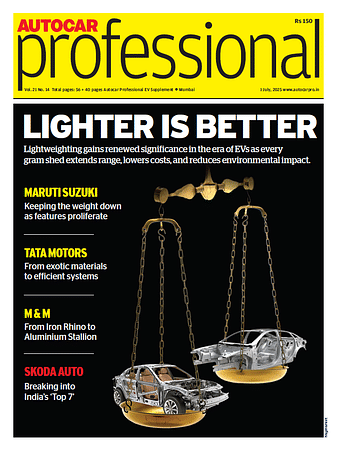Helmet makers urge stricter enforcement of rules, seek GST cut to boost safety
The current penetration of helmet usage in the domestic two-wheeler market stands at only 60%.
Seeking to boost road safety, helmet manufacturers are advocating for stricter implementation of the Central Motor Vehicles Act regulations, which mandate that OEMs provide two BIS-compliant helmets for each two-wheeler, one for the driver and the other for the pillion rider. To address this, the 2W HMA is urging the government to strictly enforce Section 138 (4) (f) of the Central Motor Vehicles Rules.
This push from the Two-Wheeler Helmet Manufacturers Association (2W HMA) comes in the wake of a recent government report that highlighted the alarming number of fatalities and injuries resulting from two-wheeler accidents in 2022. The report revealed that 25,228 people lost their lives and 63,115 sustained injuries in two-wheeler accidents last year. The 2W HMA believes that ensuring helmet availability for every rider could significantly reduce the frequency of such accidents.
"If vehicle manufacturers provided good-quality helmets along with the vehicles, it would help ensure that more people wear quality helmets," stated Rajeev Kapur, MD of Steelbird Group and President of the 2W HMA. He emphasised the importance of this measure from a road safety standpoint. Currently, most OEMs provide only one helmet at the time of vehicle purchase.
One in every two helmets sold in India is substandard or fake
The group also wants strict implementation of the MoRTH notification from 2020, which says that protective helmets must be certified under the Bureau of Indian Standard Act, 2016. The call for stricter enforcement is particularly crucial given the prevalence of substandard or fake helmets, which have been identified as a major contributor to the high number of injuries and fatalities among two-wheeler riders.
Industry estimates indicate that around 2.5 million helmets produced annually in India are of substandard quality or fakes, accounting for half of the total helmet production. A key factor driving the demand for substandard helmets is their low cost. While a substandard helmet can be purchased for as little as Rs 150, a better-quality one can cost upwards of Rs 1000. This price disparity often tilts the demand in favour of substandard helmets, especially in rural markets.
According to media reports in 2020, leading helmet manufacturer Studds Accessories Ltd. had estimated that around 80 million people who ride motorcycles and scooters in India every day still need helmets. The current penetration of helmet usage in the domestic two-wheeler market stands at only 60%.
Demand to bring down GST to 5%
To further promote helmet usage, the 2W HMA is also advocating for a reduction in the GST rate on helmets from the current 18% to 5%. This would make branded, quality helmets more affordable and accessible to the masses, potentially saving lives and reducing the economic impact of road accidents. "The benefits that will accrue to the nation will be immense in comparison to the minuscule loss of revenues by way of the reduction of GST on two-wheeler helmets," asserted Kapur.
RELATED ARTICLES
Govt to Release PM E-Drive Subsidy Guidelines for Electric Ambulances by Year-End
Electric ambulances have been included for demand incentives under the PM E-Drive scheme. Only one electric model made b...
Mercedes-Benz India Sees Flat-to-Single-Digit Growth in 2025: MD Iyer
Managing Director Santosh Iyer expects a high base, price hikes, and geopolitical uncertainty to weigh on the second hal...
Mercedes-Benz India Begins FY26 with Highest-Ever Q1 Sales
The launch of the GLS AMG Line adds to Mercedes-Benz’s SUV offerings and aligns with its broader strategy to strengthen ...





 16 Nov 2023
16 Nov 2023
 3702 Views
3702 Views





 Kiran Murali
Kiran Murali



 Darshan Nakhwa
Darshan Nakhwa

